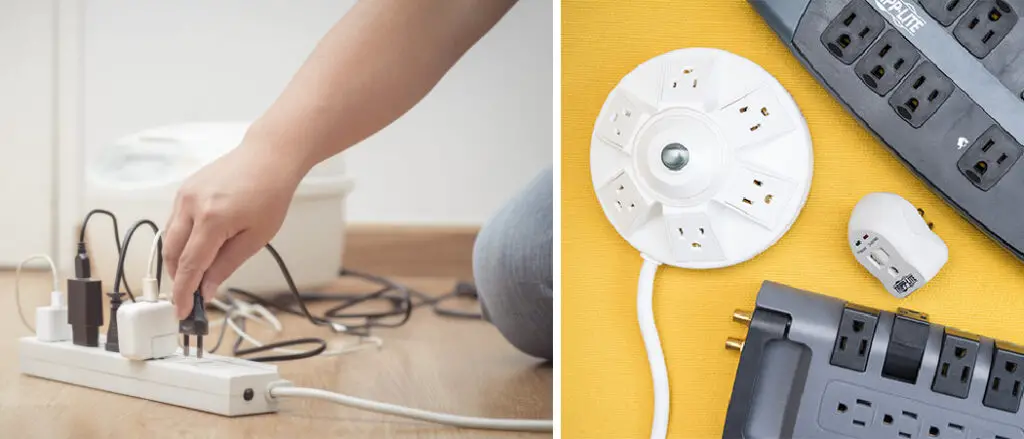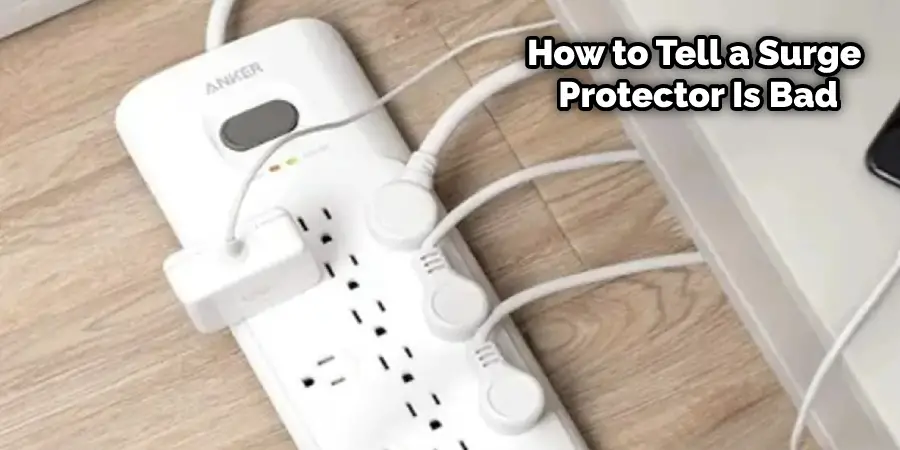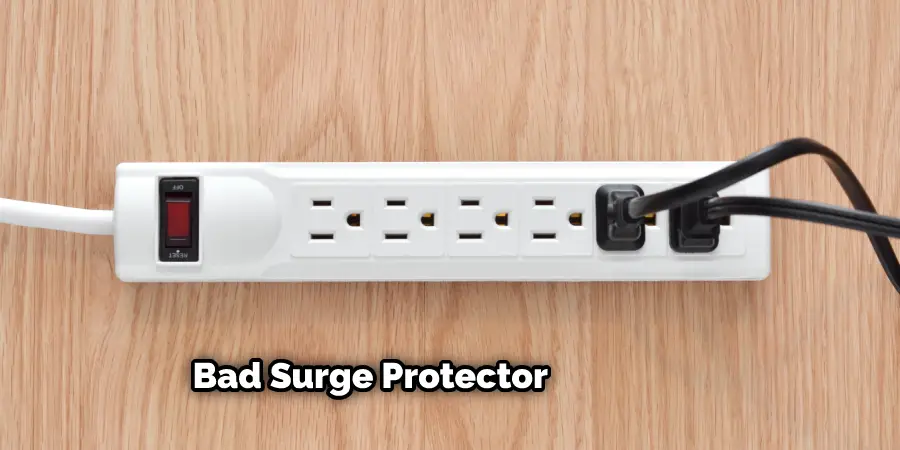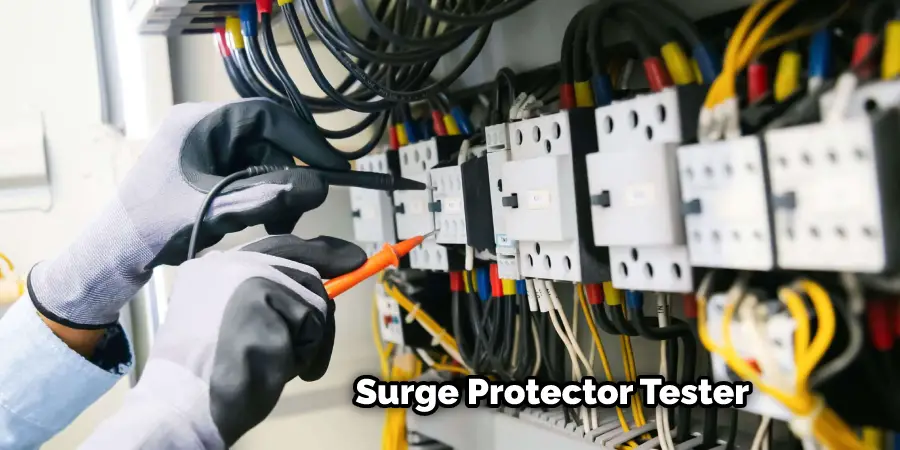Do you have any electronic devices in your home that need to be protected from power surges? Are you wondering if your current surge protector is working as it should be? If so, it’s important to stay on top of things and make sure the device you’re relying on is actually doing its job.

In this blog post, we’ll discuss some key ways to tell if a surge protector is bad and provide actionable steps for how identifying faulty equipment before a power surge strikes. So keep reading to learn more about how to tell if a surge protector is bad— we’ll answer all your questions about choosing the best type of Surge Protector for maximum safety and peace of mind.
Why It Is Necessary to Know how To Tell if A Surge Protector Is Bad
Knowing how to tell if a surge protector is bad is essential for protecting your electronic devices from power surges. Power surges can occur at any time and can damage or destroy your electronics, including computers, televisions, and other sensitive devices. A surge protector is designed to absorb and divert the excess voltage away from your devices, preventing them from getting damaged.
However, if a surge protector is not working correctly, it may not provide adequate protection, and your devices can still be damaged during a power surge. Additionally, a surge protector that is not functioning correctly may pose a fire risk, as it may overheat and start a fire.

By knowing how to tell if a surge protector is bad, you can ensure that your electronic devices are adequately protected and avoid potential damage or hazards. It is recommended to periodically check your surge protectors for any signs of damage or malfunction and replace them if necessary.
Signs of Bad Surge Protector
When inspecting your surge protectors for signs of damage, here are a few key indicators that may need to be replaced.
- Visible Damage: Check your surge protector for any physical damage, such as cracked housing or frayed cords. If you see any physical damage, it is best to replace the Surge Protector immediately.
- No Power: Unplug your surge protector and plug a lamp into it. If the lamp does not turn on, this is an indication that the Surge Protector may be bad and needs to be replaced.
- Sparking or Flickering Lights: Plugging electronics into a faulty surge protector can cause lighting fixtures in your home to flicker or spark. If you notice this happening, it is best to unplug the surge protector and replace it with a new one.
- Aging: Surge protectors have an expiration date, like any other electronic equipment. The manufacturer’s instructions are for the expected lifespan of your device, and make sure to replace it before that point.

By checking your surge protectors for any signs of damage or malfunction, you can ensure that your electronic devices are always adequately protected and avoid any potential hazards.
Ways how To Tell if A Surge Protector Is Bad
1. Test the Circuit Breakers:
If your surge protector has circuit breakers, check them periodically to make sure they are functioning properly. Make sure that when a breaker trips and resets itself that it is able to trip again and reset each time electricity passes through it.
2. Check for Wear & Tear:
Inspect the surge protector for any signs of wear and tear, such as frayed cords, cracked casing, or exposed wires. This can indicate that the surge protector is faulty and should be replaced.
3. Check for Discoloration:
Look for discolored spots on your surge protector’s casing. This could be a sign of overheating and potential fire hazards.
4. Listen for Buzzing Sounds:
Listen to see if you can hear any buzzing or humming sounds from the surge protector, as this could indicate that it is not working correctly.
5. Check Indicator Lights:
If your surge protector has indicator lights, ensure they function properly. The lights should be illuminated when the surge protector is connected and powered on, and they should go off when disconnected.
6. Test the Outlets:
Test each outlet by plugging in a device and turning it on. If the device does not power on, there may be an issue with your surge protector’s outlets.
7. Look for Signs of Overheating:
If your surge protector is getting too hot, it could be a sign that something is wrong, and it should be replaced immediately.
8. Check the Circuitry:
Inspect the inside of the surge protector to check for any signs of corrosion or discoloration, as this could be an indication of poor circuitry.
9. Look for Sparks:
If you hear any crackling or sparking noises coming from the surge protector, unplug it immediately and replace it with a new one.
10. Check the Protection Rating:
Protection ratings on surge protectors indicate the maximum voltage that it can handle. As time passes, these ratings can change, so make sure to check your surge protector’s rating periodically.
11. Use a Surge Protector Tester:
If you want to be sure that your surge protector is working correctly, you can use a surge protector tester to test the outlets and circuit breakers. This will help ensure that your devices are properly protected from power surges.

12. Look for A Warranty:
Look for surge protectors that come with a warranty, as this can be a good indicator of quality. A good-quality surge protector should last you several years and provide the proper protection your electronic devices need.
13. Check for Physical Damage:
Inspect the surge protector for any visible physical damage, such as cracks, dents, or scratches. This can be a sign of a problem and can affect the surge protector’s performance.
By following these steps and checking your surge protectors periodically, you can make sure that your electronics are properly protected and avoid any potential hazards.
How to Repair Bad Conditioned Surge Protector
1. Replace the Fuses:
If your surge protector has fuses, check to see if they are blown before replacing them. If so, replace the fuse with one of the same ratings and make sure that it is firmly inserted into its socket.
2. Clean Out Any Dust & Debris:
Dust and debris can build up in the surge protector over time, reducing its effectiveness. Carefully open up the device and use a can of compressed air to gently blow out any dust or debris that has accumulated inside.
3. Replace Damaged Components:
If you notice any damaged components such as cracked wiring or loose screws, these should be replaced or repaired as soon as possible.
4. Use Insulating Tape:
If you notice any exposed wiring or connections, use insulating tape to cover them properly and protect them from short-circuiting.
5. Check Connections & Wires:
Check all the wires and connections to make sure that they are secure before switching the surge protector back on.
6. Replace the Surge Protector:
If your surge protector is still not working after repairs, it may be time to invest in a new one. Replacing your surge protector every few years is recommended to ensure that your electronics have the best possible protection.
By following these steps and conducting regular maintenance on your surge protector, you can ensure that it is working properly and keep your electronic devices safe from power surges.
Tips for Maintaining a Surge Protector for Long-Term Use
1. Don’t Overload the Outlets:
Avoid plugging too many appliances into a single surge protector, as this can overload the system and cause it to fail.
2. Unplug Devices When Not in Use:
When devices are not being used, unplug them from the surge protector to help protect them from harmful power surges.
3. Store Properly:
Make sure that your surge protector is kept in a cool, dry area away from heat sources and excessive moisture. This will help prevent any damage or wear and tear on the device.
4. Avoid Excessive Movement:
Avoid moving the surge protector around too much, which can loosen or break the internal components. If you need to move the device, take extra care and use two hands.
5. Use Surge Protector Covers:
Surge protector covers are an easy way to protect your devices from dust, dirt, and moisture. They are also a useful way to organize your cords and keep them from tangling or getting damaged.
By following these tips and taking proper care of your surge protector, you can extend its lifespan and ensure that it is providing the best protection for your electronic devices.
Conclusion
In conclusion, several signs can help you tell if your surge protector is bad. If the power strip or wall outlet sparks when it’s plugged in, this indicates a problem with either the surge protector itself or the wiring inside of it.
You should also inspect for any visible damage on the device and check to make sure all outlets are working properly. Lastly, be aware of any strange smells coming from your surge protector as this could indicate an internal issue.
By staying vigilant and inspecting your devices regularly, you can ensure they will continue to protect against potential electrical surges and keep your home safe. Thanks for reading this article about how to tell if a surge protector is bad.
